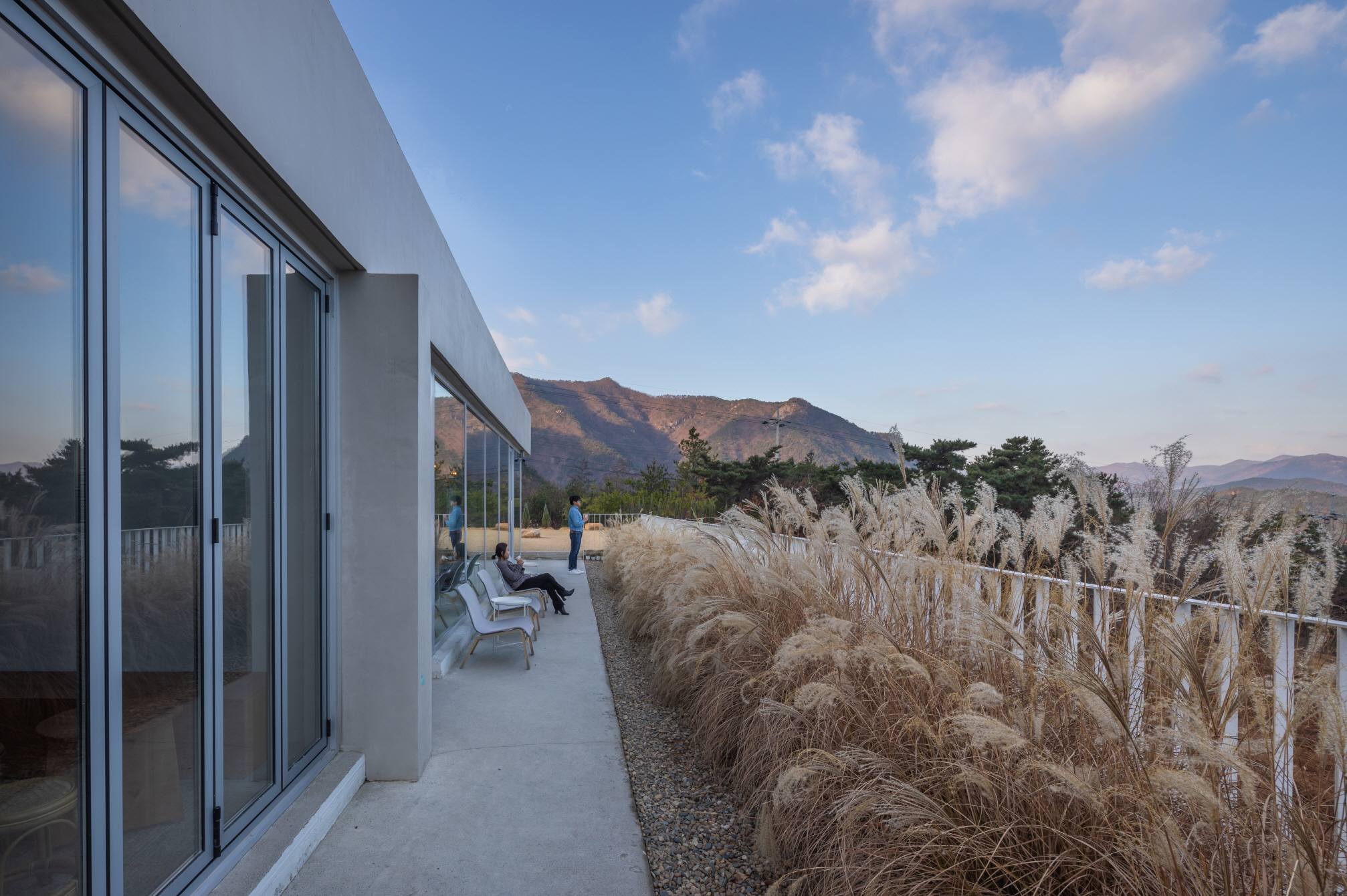









Design plan
Project location: Maejeon-myeon, Cheongdo-gun, Gyeongsangbuk-do, Republic of Korea마을만들기: 최소한의 조경, 최대한의 건축
2개의 사업지에 판매시설, 휴게음식점, 단독주택이 모여 마을이 되고자 한다. 중심 건물은 ‘ㅏ’ 자 형태로 연결된 중정과 부속 건물로 구성된다. 분할된 대지와 고저차를 활용해 진입로에서 만나는 가로벽은 마을 중심으로 이용자를 끌어들인다. 마당을 거쳐 들어오면, 연결된 외부공간을 경험할 수 있다. 길을 통해 건축물과 만나고, 건축물과 건축물이 만나 사이공간이 되는 건축마을이 구성된다.풍경의 틈(Landscape crack)
풍경의 틈은 아미꼬뜨에서 가장 핵심적인 생각이다. 고저차를 이용해 만들어진 틈은 공간을 분절하기도 혹은 연결하기도 한다. 풍경의 틈을 통해 기능 공간과 휴식 공간을 분리하고, 남겨진 자연과 교감할 수 있도록 한다. 만들어진 틈과 공간에서 사용자는 건축을 잊고 자연과 교감하기를 기대한다.Town making: minimal architecture, maximal scenery
Sales facilities, restaurant lounges, and detached houses are gathered in the two business sites to become a village. The central building consists of a courtyard and annexes connected in an 'ㅏ ' shape. Using the divided site and the difference in elevation, the horizontal wall that meets at the entrance draws users to the center of the village. When you enter through the courtyard, you can experience the connected external space. Through the road, you meet the space, and spaces meet to form an architectural village that becomes a landscape.Landscape crack
The crack in the landscape is the most important idea in Ami-cote. The gap created by using the difference in elevation of the site divides or connects the space. A gap in the landscape separates the functional space from the lounging space, allowing one to commune with the nature that remains. In the gaps and spaces created, we hope users forget the architecture and communicate with nature.